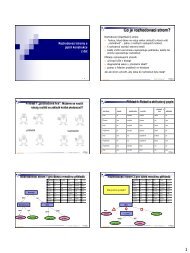Evolutionary Algorithms: Introduction Jiˇr´ı Kubal´ık Department of ...
Evolutionary Algorithms: Introduction Jiˇr´ı Kubal´ık Department of ...
Evolutionary Algorithms: Introduction Jiˇr´ı Kubal´ık Department of ...
You also want an ePaper? Increase the reach of your titles
YUMPU automatically turns print PDFs into web optimized ePapers that Google loves.
p<strong>Evolutionary</strong> Programming<br />
Lawrence J. Fogel in 1960: <strong>Evolutionary</strong> programming (1960)<br />
The goal is to evolve an ”intelligent behavior” that would exhibit the ability to (1) predict one’s<br />
environment, coupled with (2) a translation <strong>of</strong> the predictions into a suitable response in light <strong>of</strong><br />
the given goal.<br />
the environment was described as a sequence <strong>of</strong> symbols taken from a finite alphabet,<br />
finite state machines (FSMs) were used for representing the required behavior.<br />
Five modes <strong>of</strong> mutation<br />
add a state,<br />
delete a state,<br />
change the initial state,<br />
change an output symbol,<br />
change a next-state transition.<br />
FSM<br />
D. B. Fogel and K. Chellapilla: Revisiting <strong>Evolutionary</strong><br />
Programming, Aerospace/Defense Sensing and controls.<br />
<strong>Evolutionary</strong> <strong>Algorithms</strong>: Intro


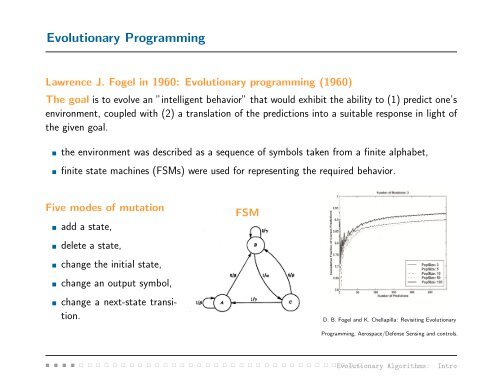

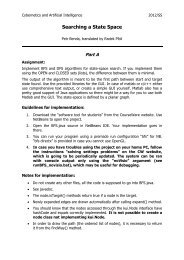
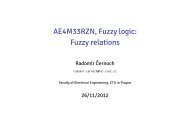


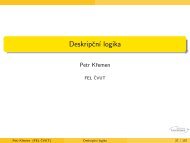


![RANSAC [Fischler, Bolles '81]](https://img.yumpu.com/17549294/1/190x143/ransac-fischler-bolles-81.jpg?quality=85)




